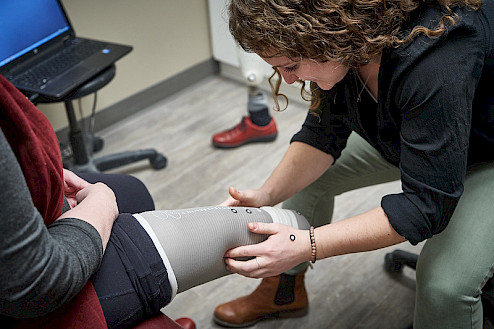Phantom limb pain, after an amputation, is a common side effect. If you experience this, you are not alone. Approximately 70% of amputees encounter phantom limb pain in the first six months of their amputation, although it can begin at anytime. It is most commonly found with arm and leg amputations but can appear with any amputation
Phantom limb pain, the ongoing painful sensations, can be felt differently for everyone and can include cramps, shooting pains or pins and needles coming from the part of the limb that is no longer there. Phantom limb pain is slightly different then phantom sensation which is the sense that the limb that has been amputated is still there, it is commonly a feeling of itching or tingling.
Research shows that if there is pain in the limb before it is amputated this could increase the chances of phantom pain. There is no clear source of phantom limb pain, but research is starting to show that there is a link to your brain and/or spinal cord losing signal from the missing body part. As a defence your body sends the signal of pain because it perceives that there is a problem and this is the body’s natural reaction.
For a lot of amputees, phantom limb pain can subside with little to no treatment. Others can battle with intense pain and try a variety of treatments before they find something that works. Fortunately, today there are many treatments that can be explored.
Treatments such as;
• Over-the-counter or prescribed medications
• Acupuncture
• Mirror box therapy
• Massage of the residual limb
• TENS (transcutaneous electrical nerve stimulation)
• Compression/use of shrinker sock
• Natural ways such as different techniques to relax, find a way to distract yourself and getting active
Remember, phantom limb pain and sensation is a natural and real complication of amputation. It is a common side effect that occurs in many amputees. You are not alone when it comes to this pain. Do not be afraid to talk to your medical team and find solutions to your pain that work for you.

